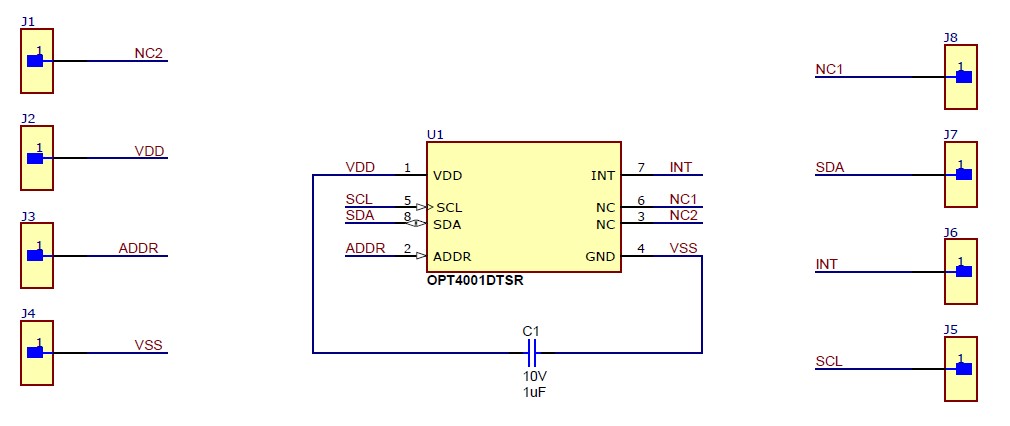SBAA432A april 2020 – july 2023 OPT3001 , OPT3001-Q1 , OPT3004 , OPT3006 , OPT3007
3 Sensor Board Hardware Design
Figure 3-1 shows the OPT4001 light sensor design schematic. The light sensor is typically mounted on a dedicated sensor board and is separate from the main board. The light sensor board is able to connect to the main board. Refer to the following design tips:
- The SDA and SCL pins require pullup resistors. Customers can add resistors to the light sensor board or the main board. For the best signal quality, avoid using long wires or traces. Pullup resistors are not shown in Figure 3-1 since these resistors are added to the main board.
- The OPT4001 VDD pin must have a stable, low-noise power supply with a 100-nF bypass capacitor close to the device and solid grounding.
- The INT test pin is optional. If needed, include a pullup resistor, since the INT pin is an open drain.
- The PicoStar™ package does not have ADDR and INT pins.
 Figure 3-1 OPT4001 Schematic
Figure 3-1 OPT4001 SchematicFor all TI light sensors, follow the PCB layout guidelines in the Layout section of the OPT4001 data sheet.